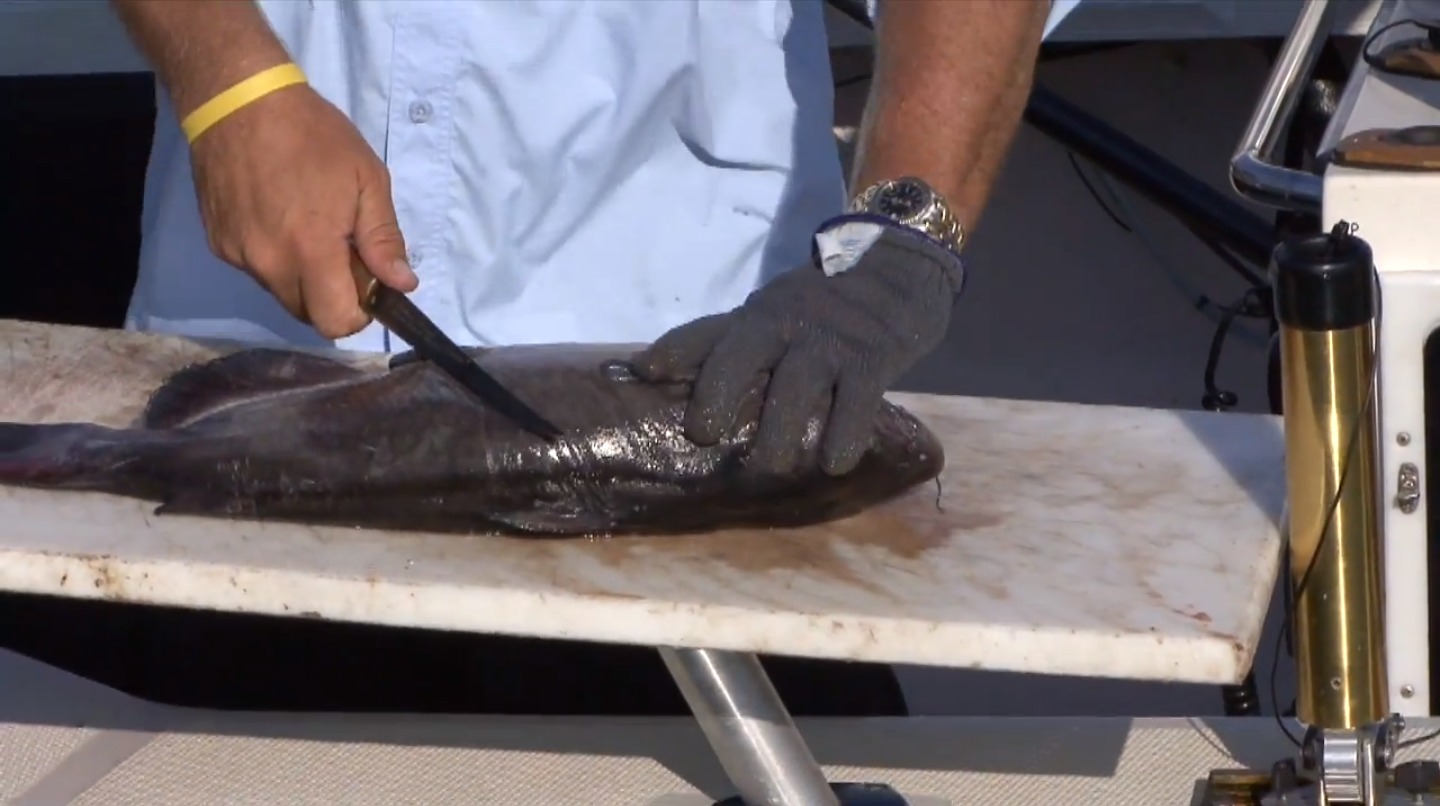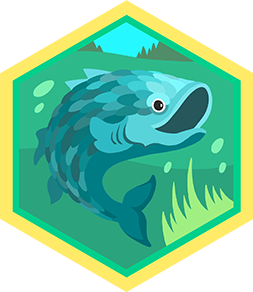Fillet a fish
With adult supervision, learn to fillet a small cleaned fish using safe tools, practicing careful cuts, knife skills, and proper hygiene.



Step-by-step guide to fillet a fish
How to Fillet a Fish (Salmon): A Beginner's Guide
Step 1
Wash your hands with soap and warm water for 20 seconds to remove germs.
Step 2
Gather all materials on a clean counter so everything is within reach.
Step 3
Put on kitchen gloves to keep your hands clean and dry while you work.
Step 4
Place the fish on the cutting board on its side with the head to your left.
Step 5
Ask an adult to make a small cut just behind the gills down to the backbone.
Step 6
Ask the adult to turn the knife so the blade points toward the tail and carefully slide it along the backbone to free the first fillet.
Step 7
Lift the freed fillet gently with your fingers and place it into the fillet bowl.
Step 8
Ask the adult to flip the fish and repeat the same cut to remove the second fillet.
Step 9
Use tweezers to pull out any visible rib bones or pin bones from each fillet.
Step 10
Rinse each fillet briefly under cold running water to wash away loose scales or bits.
Step 11
Pat the fillets dry with paper towels so they are ready to cook or store.
Step 12
Scrape fish scraps and bones into the bowl for scraps to keep your workspace tidy.
Step 13
Wash the cutting board and any tools with dish soap and hot water to clean them.
Step 14
Wash your hands with soap and warm water again after cleaning up.
Step 15
Share a photo and a short description of your finished fillets on DIY.org.
Final steps
You're almost there! Complete all the steps, bring your creation to life, post it, and conquer the challenge!


Help!?
What can we use instead of tweezers, kitchen gloves, or a fillet bowl if we can't find them?
Use clean needle-nose pliers in place of tweezers to pull pin bones, wear disposable food-service gloves or thoroughly wash and dry hands and use paper towels instead of kitchen gloves, and place freed fillets on a rimmed baking sheet or large plate if you don't have a fillet bowl.
The adult's cut keeps tearing the fillet or leaving meat on the bones—how can we fix that?
Have the adult start with the small cut behind the gills as instructed, keep the blade flush against the backbone and use long, steady strokes toward the tail while stabilizing the fish by patting it dry and placing a damp towel under the cutting board to prevent slipping.
How can we adapt this filleting activity for younger kids versus older kids?
For preschoolers let them do washing hands, gathering materials, and scraping scraps into the scrap bowl; elementary kids can hold the fish, help lift fillets into the bowl and pull pin bones with tweezers under supervision; and teens can practice the backbone slide with an adult guiding the knife.
What are simple ways to extend or personalize the filleting activity after the fillets are finished?
Use the scraps and bones from the scrap bowl to make fish stock, season and cook one fillet to try different recipes, photograph and write the short description for DIY.org, or weigh fillets to compare yield and record results as a mini science project.
Watch videos on how to fillet a fish
The Ultimate Fish Filleting Tutorial for Home Cooks
Facts about fish preparation and knife safety
🔪 A sharp, flexible fillet knife makes smoother cuts and is actually safer than a dull knife because it needs less force.
🧊 Keeping the fish cold firms the flesh and makes it much easier to get neat, clean fillets.
🐟 Some fish (like trout and salmon) are easy to fillet in one clean pass, while round fish (like bass) need different cuts to avoid bones.
🧼 Washing hands, tools, and surfaces before and after filleting stops germs and keeps the fish safe to eat.
🧤 Wearing a cut-resistant glove on the hand that holds the fish can greatly reduce the risk of accidental cuts.
How do you fillet a fish with a child?
What materials do I need to fillet a fish with a child?
What ages is this activity suitable for?
What safety tips and benefits come from filleting fish with a child?


One subscription, many ways to play and learn.
Only $6.99 after trial. No credit card required



